Contents
Many people have long practiced growing greens on the windowsill. It does not cause much trouble and provides the whole family with the necessary vitamins, even in winter. City dwellers in Germany, France, and other European countries grow cucumbers and tomatoes on their windowsills. Such seedlings perform not only an aesthetic function, but also provide people far from agriculture with a small supply of self-grown vegetables. Their experience shows that growing tomatoes on a windowsill in winter is possible. In this article, we will look at how to grow tomatoes on a windowsill.
Growing conditions
Tomatoes that are planned to be grown on the windowsill in winter are also called “room tomatoes”. Indoor tomatoes do not require conditions that are radically different from growing conditions in open ground. However, there are some peculiarities. Basic rules that even an inexperienced gardener can easily follow:
- The tomato loves light, so it is best to place the seedlings on the south side. The light day of the plant is 13-16 hours;
- if there is no south side in the apartment or house, you should resort to artificial lighting with fluorescent lamps, fluorescent lamps, energy-saving lamps. Recently, specially designed phytolamps have appeared on sale. In any case, the lamp should be placed at a distance of 25-30 cm from the seedlings;
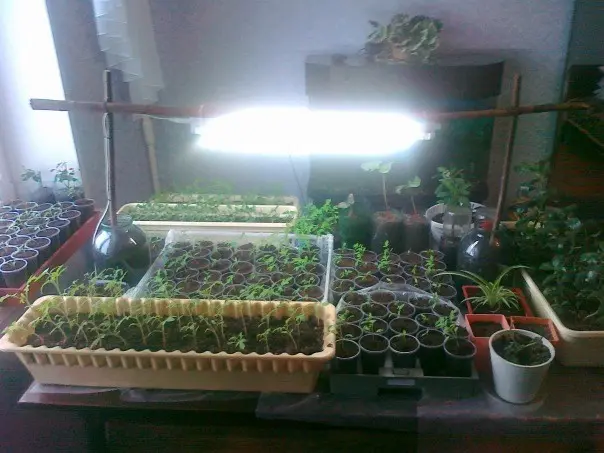
- the earth should not be clay. If you want to grow tomatoes with earth from the garden, you need to add ordinary sand to it, as well as a little potassium permanganate (for disinfection). Properly selected soil will ensure a comfortable growth of tomatoes on the windowsill.
- it is not worth pouring water on the plant, because it threatens with diseases, for example, the “black leg”;
- the temperature during the day should be 20-25 degrees, at night it can be lowered to 15-16 degrees. On particularly hot days, do not be afraid to ventilate the room, this will not harm the plant at all.
- Organic fertilizers will help you grow tomatoes. They are good in a small amount, but an excess will lead to a lush growth of greenery, but not fruits;
- the container should correspond to the size of the plant, which can be recognized by the name of the variety.
What varieties are suitable
There is a huge variety of tomato varieties on the agricultural market. How to choose the right ones that are not afraid of even winter and how to grow tomatoes on the windowsill? Varieties of low tomatoes are best suited for growing on the windowsill. 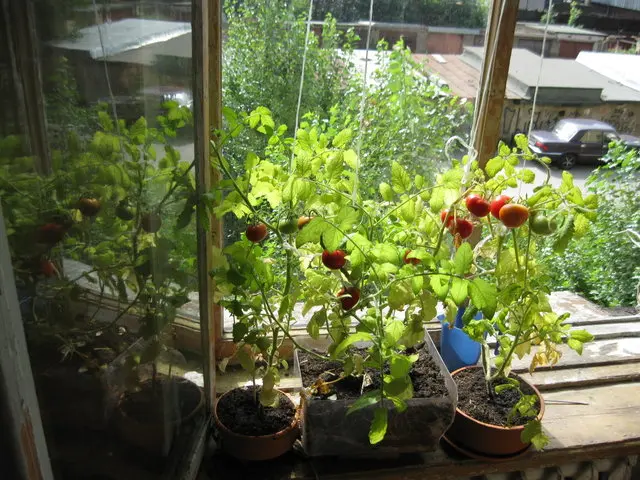
The fruits of such tomatoes are usually small in weight and size, which is ideal for growing in small pots with a small amount of land. There are also an incredible number of varieties that meet such requests. Here are just some varieties of tomatoes for the windowsill:
- Cherry;
- Bullfinch;
- Japanese dwarf;
- Minnie;
- Yamal;
- Balcony charm;
- Room surprise;
- Rowan beads and many others.
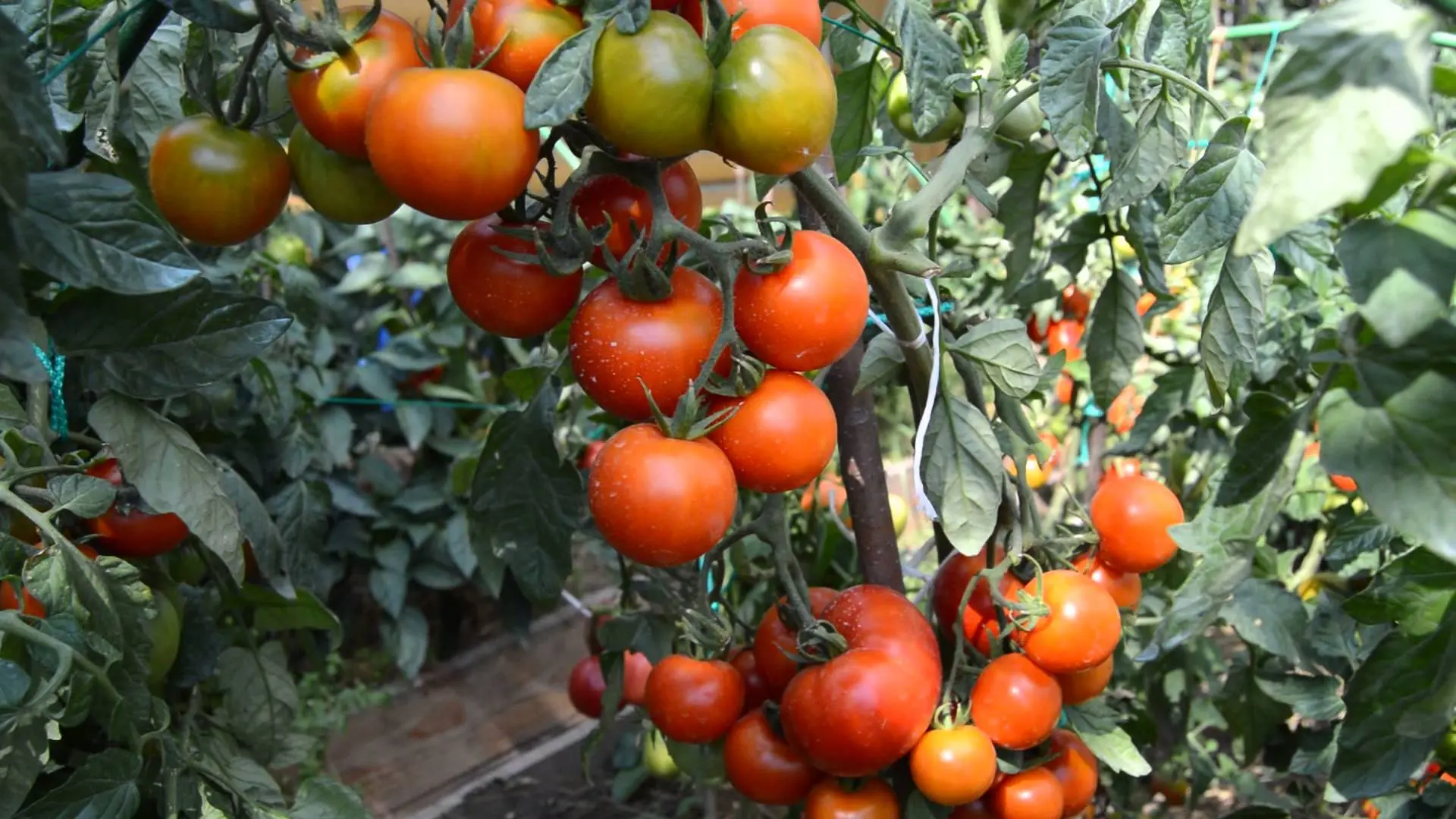 If the window sill is insulated, for growing on the windowsill, choose a tomato variety with a taller stem and a large fruit. Varieties of weighty tomatoes Bull’s Heart and White filling are suitable for those who have very wide window sills with the ability to place flowerpots or drawers. But it should be borne in mind that over time the bushes will become quite high and it will be necessary to transfer the plants to the balcony or place them on the floor. Experienced gardeners know that different varieties behave differently on the same land. With the cultivation of tomatoes on the windowsill, the story is the same: only by trial and error will you find a variety that is ideal for the conditions of the apartment. For the first time, you can take several different varieties and observe the difference in their growth.
If the window sill is insulated, for growing on the windowsill, choose a tomato variety with a taller stem and a large fruit. Varieties of weighty tomatoes Bull’s Heart and White filling are suitable for those who have very wide window sills with the ability to place flowerpots or drawers. But it should be borne in mind that over time the bushes will become quite high and it will be necessary to transfer the plants to the balcony or place them on the floor. Experienced gardeners know that different varieties behave differently on the same land. With the cultivation of tomatoes on the windowsill, the story is the same: only by trial and error will you find a variety that is ideal for the conditions of the apartment. For the first time, you can take several different varieties and observe the difference in their growth.
You need to be attentive to the quality of the purchased seeds – always check the expiration dates on the factory packaging. Often inexperienced gardeners cannot understand the reason why the seeds do not germinate. It is the overdue implementation period that can ruin your first growing experience.
Growing instructions
Having chosen the necessary varieties of tomatoes for the windowsill, we begin the process of seed germination.
Before sowing seeds, it is necessary to carry out prophylaxis against late blight.
To do this, soak the seeds in a weak solution of potassium permanganate for a quarter of an hour (maximum half an hour). 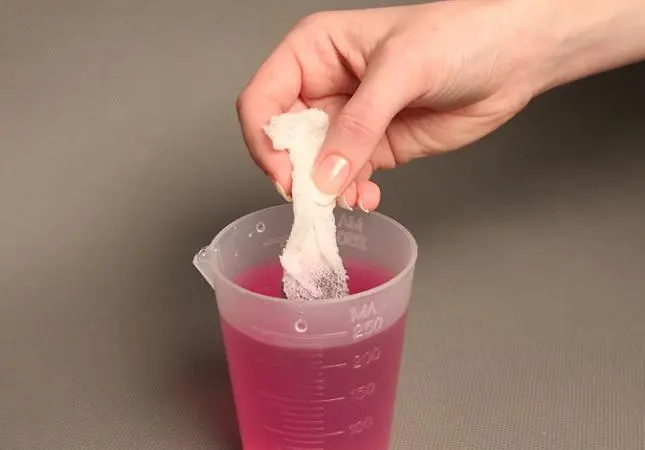 The next step will be the preparation of the land. Peat cups are ideal, you can also use plastic ones. For seedlings, such cups should have a volume of at least 200 ml. We fill the cups with the soil mixture (if purchased ready-made) or mix it ourselves according to the following formula: 5 parts of soil + 5 parts of humus + 2 or 1 part of sand + a little peat.
The next step will be the preparation of the land. Peat cups are ideal, you can also use plastic ones. For seedlings, such cups should have a volume of at least 200 ml. We fill the cups with the soil mixture (if purchased ready-made) or mix it ourselves according to the following formula: 5 parts of soil + 5 parts of humus + 2 or 1 part of sand + a little peat.
For 10 liters of the finished mixture, you need to take a small amount of urea (no more than a matchbox) and the same amount of potassium sulfate, as well as wood ash. All this can be purchased in specialized stores. Mix the mixture well and place in the prepared cups.
Let’s start sowing.
Tomato seeds should be at least 2 cm apart – this distance is very important for simultaneous germination. Seeds should be sown in moist soil to a depth of no more than 2 cm.
With a deeper planting, it will take a little longer to wait for seedlings.
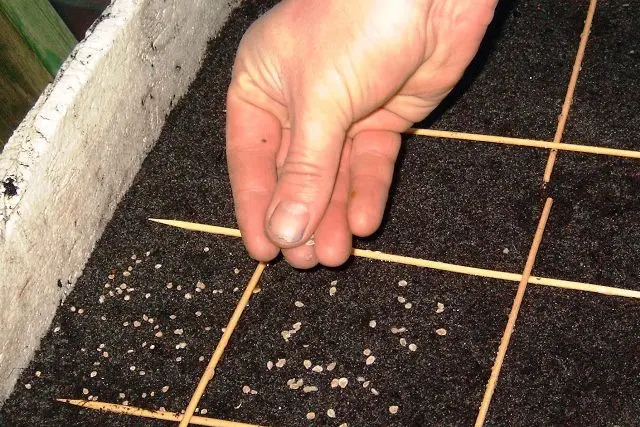
Sprinkle the seeds located in the dimples with earth, and cover with glass or film on top. This will keep moisture in the ground until the seeds emerge. We place the cups in a warm, but not hot place, and wait for the first green stems to appear. From time to time, you can wet the soil.
After the shoots have appeared, we transfer the cups to the windowsill. Film or glass, of course, remove. At this stage, it is important to monitor the heat and light for tomatoes, as well as provide regular rationed watering. Picking, that is, seedlings of the strongest sprouts in a separate bowl, is carried out after the appearance of two true leaves. The volume of the pot for the subsequent growth of a tomato should be much larger – 7-10 liters.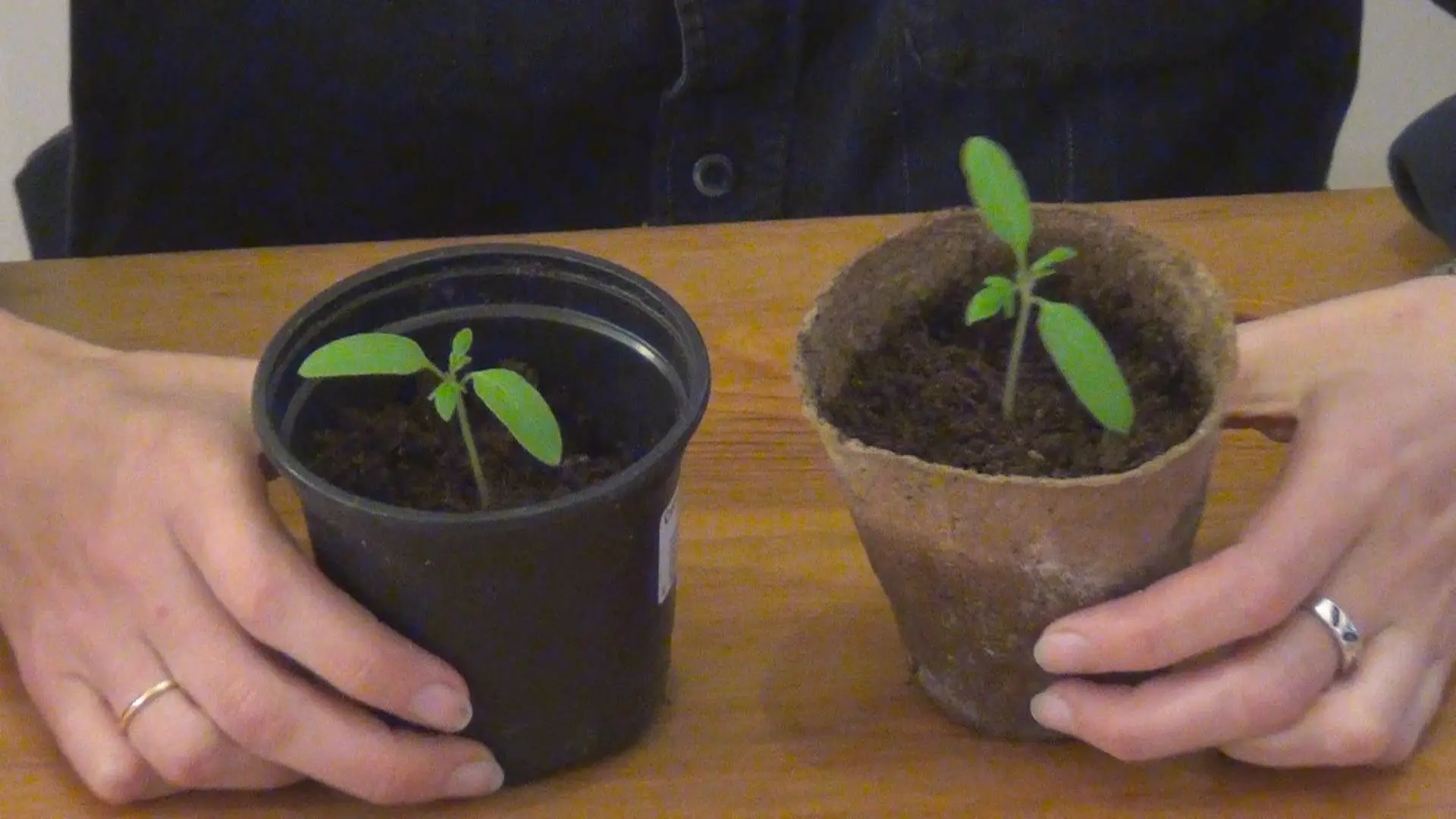
The following is the care plan:
- Once every 8-10 days, we fertilize with mineral or organic fertilizers, the breeding instructions are always indicated on the package. A weak solution of potassium permanganate will also be useful for growing tomatoes on the windowsill;
- Do not forget to loosen the soil at the roots. We do this very carefully so as not to damage the thin roots;
- When the need arises, wooden or specialized plastic pegs should be placed in the ground, to which tomatoes will be tied;
- Over time, additional stepchildren will appear on the plants. The process of removing them – pinching – will provide better nutrition for tomato fruits. One stem can be left to form a second stem;
- After the set of fruits, we leave only 3-5 clusters for cultivation on each trunk. We also remove the top of the stem, inflorescences. Such measures will help the rapid development of fruits that have already begun;
- We cut off the dried leaves, we especially carefully monitor those that are closest to the root. It happens that it is they who block the access of water to the root system and slow down cultivation;
- You can also help the plant through the pollination process. To do this, lightly shake the plant and draw it over the flowers with a soft brush or feather. We carry out this procedure very carefully.
- Late blight is a typical nightshade disease. Tomatoes on the windowsill, like their counterparts in the open field, suffer from this fungal scourge even in winter. To prevent it, you need to treat the stems and leaves with tincture of garlic and potassium permanganate (12 garlic + 12 grams of potassium permanganate + 3 liters of water). You can also apply the phytosporin spraying method.
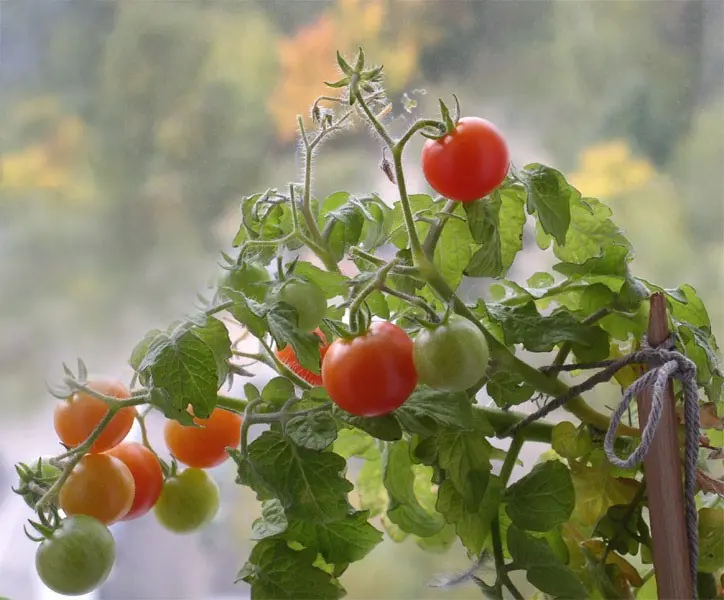 Now you know how to grow tomatoes on the windowsill even in winter. In order to better understand some of the details of planting and care, it is worth watching the videos and photos that are presented on our website.
Now you know how to grow tomatoes on the windowsill even in winter. In order to better understand some of the details of planting and care, it is worth watching the videos and photos that are presented on our website.
It’s always nice to taste homemade, lovingly grown tomatoes. With the desire and diligence, you can please yourself and your loved ones with them all year round.
Video “Growing tomatoes on the windowsill”
A story about how to prepare tomato seeds before planting, how to plant them correctly and how to care for a plant when grown indoors.









